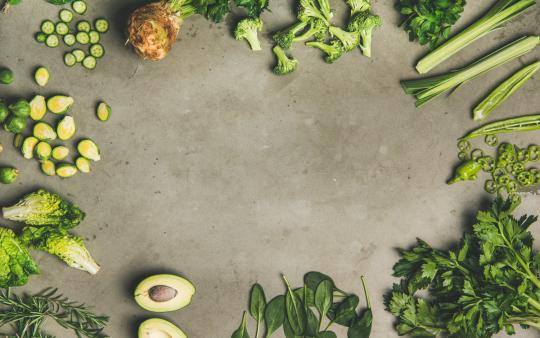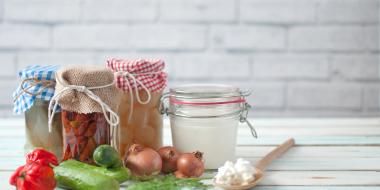No one ever warns you that when you become a parent you will think about poop. A lot. Colour, consistency, too much, too little, too often, not often enough…we regularly have poop on our minds! So how often should kids “go” and how do we know when to be concerned?
How Often Should Kids Poop?
Bowel movements will vary as children grow and develop. Below are some guidelines for how often infants, toddlers and children will poop (and what it should look like).
Less than 1 week old
Four or more bowel movements per day. Typically liquid or extremely soft.
Less than 3 months old
Anywhere from several bowel movements per day to as little as once per week. Breastfed babies tend to poop less often as breastmilk is readily absorbed, leaving little for poop formation.
Over 3 months old
As babies transition to solids, most will pass stool at least once a day. The stool should be well-formed (not pellet-like), easy to pass, require minimal wiping, and shouldn’t contain blood, mucous, or undigested food (aside from corn, which isn’t digestible, or nuts or seeds, if they haven’t been thoroughly chewed. Note that beets, a baby favourite, will discolour the stool red).
Children
Most research agrees that constipation can be defined as less than three bowel movements per week in a child of any age. Additionally, any discomfort in passing stool is considered constipation, even if accompanied by regular bowel movements.
Symptoms That Your Child Is Constipated
Also called fecal incontinence or stool soiling, encopresis is the involuntary, and often uncontrollable, passing of stool, usually in unwanted places (i.e. their pants) once already toilet-trained. This is usually the result of impacted stool blocking the normal passage of feces, leading to swelling of the bowels and loss of bowel movement control and is a symptom of chronic constipation in children over the age of four.
If your child is experiencing any of the following symptoms, visit your healthcare provider for a complete work-up.
-
Constipation
-
Abdominal pain
-
Liquid stool on underwear (often mistaken for diarrhea)
-
Passage of overly large stools
-
Avoidance of bowel movements
-
Lack of appetite
-
Enuresis: bedwetting and daytime wetting; closely associated with constipation
A Bowel-Friendly Diet Is Rich in Fibre
In most cases, constipation can be remedied with a few simple additions to the diet and changes in schedule.
Fibre fill-up
We need fibre to help our digestive systems run smoothly. As food moves through the body, various muscles from the esophagus to the colon help push food along in wave-like motions. Known as peristalsis, the health of this process determines how efficiently our digestive systems work. If we aren’t getting enough fibre, the system slows down, decreasing the transit times of waste in our bodies. When we eat, any fibre that isn’t digested is dumped into the large intestines and creates bulk, which is a necessary component in increasing the size and weight of stool. If we don’t provide the body with enough bulk, it will impair the signaling process in the colon, preventing the movement and formation of stool. Fibre is also a necessary prebiotic, providing food for beneficial bacteria in the colon, which results in a happier immune system.
To determine how much fibre your child needs each day, use the following formula:
5 to 10 grams plus your child’s age.
For example: If your child is three years old, they should be getting about 8–13 grams of fibre daily.
To make sure your little one gets enough fibre, read food labels or do a quick internet search for everyday food amounts. A good rule of thumb is to ensure that at every meal, at least half of your child’s plate is primarily vegetables (with some fruit). Also, make sure to minimize constipating foods and focus on non-constipating ones.
Constipating foods:
-
Dairy products
-
Meats
-
Bananas
-
Starchy veggies (sweet potatoes, squash)
-
Potatoes (French fries, potato chips, baked potatoes)
-
Canned fruits and vegetables
-
Overcooked vegetables
-
Fruit juice (without pulp)
-
Starchy grains (white rice) and pasta
-
Fried foods (donuts, fried chicken)
-
Processed foods (crackers, cookies, snack products, pretzels)
-
White bread
Non-constipating foods:
-
Most fresh or frozen veggies, especially leafy greens
-
Most whole fresh or frozen fruits
-
Whole-grain products (whole wheat, rye, brown rice, oats, quinoa)
-
Nuts and seeds
-
Legumes (beans, chickpeas, lentils)
Drink Plenty of Water and Fluids
Ensuring your child is drinking plenty of fluids alongside a fibre-rich diet is key. Since fibre absorbs water and draws it into the stool, it’s essential to up your child’s liquid intake in tandem with fibre. Increasing fibre intake without increasing fluid intake can actually worsen constipation!
To determine your child’s ideal daily fluid intake, use the following formula:
Half your child’s body weight (in pounds) referred to as ounces.
For example: If your child weighs 50 pounds, they should be consuming 25 ounces of non-caffeinated fluids each day (the equivalent of 3 cups or 750 ml).
What your child drinks is just as important as how much. While fruit juices, milk, and herbal teas count as liquid, water is the very best hydrator out there and should make up the bulk of your child’s fluid consumption.
Constipation May Be Caused By Food Sensitivity
If the above methods don’t get things moving, you may want to consider eliminating certain foods altogether to see if a food sensitivity might be to blame. Common ones include gluten, soy, eggs, yeast, bananas, nightshades, and corn. More than one in three kids with constipation are sensitive to dairy and are more likely to experience runny noses, skin rashes, and asthma than other kids. If this sounds familiar, try switching to an unsweetened, organic milk alternative like oat, cashew, or hemp milk. Keep in mind that even non-sensitive kids can eventually develop constipation if they’re consuming too much cow’s dairy. If you’re worried about calcium intake, there are plenty of other foods that provide absorbable calcium sources like leafy green veggies, nuts and seeds, salmon, and even oranges.
Toilet Retraining and Positive Reinforcement
One of the most effective methods for curbing constipation is retraining your child’s bowels by having them sit on the toilet at the same time each day. An ideal time is just after breakfast, as the bowels are stimulated with food and the body and nervous system are relaxed from having spent multiple hours in “rest and digest” mode. This is key for school-aged kids who often hold their stool during the day to avoid using school bathrooms.
The success of the retraining schedule is highly dependent on the ability of your child’s nervous system’s to remain relaxed long enough to have a bowel movement. Positive reinforcement and encouragement work well here—words of praise and even rewards can go a long way in helping to create a positive, stress-free environment. Avoid punishments or shaming if accidents happen or if they are unable to have a bowel movement.
Natural Remedies For Stalled Peristalsis
Peristalsis often becomes impaired in children with constipation, making it very difficult to pass stool. Many natural agents and therapies like ginger, probiotics, acupuncture and herbal medicine can stimulate peristalsis but it’s best to seek out the support of your healthcare practitioner for best product recommendations and safe dosing.
While the above advice should work to remedy most cases of childhood constipation, visit your healthcare provider to rule out other medical causes like bowel impaction, parasites, or celiac disease, as these conditions will require a very particular plan to help your child’s body repair, rebalance, and regulate itself.
You may also enjoy: The Signs, Causes, and Impact of Constipation in Kids, What Your Infant's Poop Says About Their Health, and 14 Natural Relief Strategies for Constipation.






